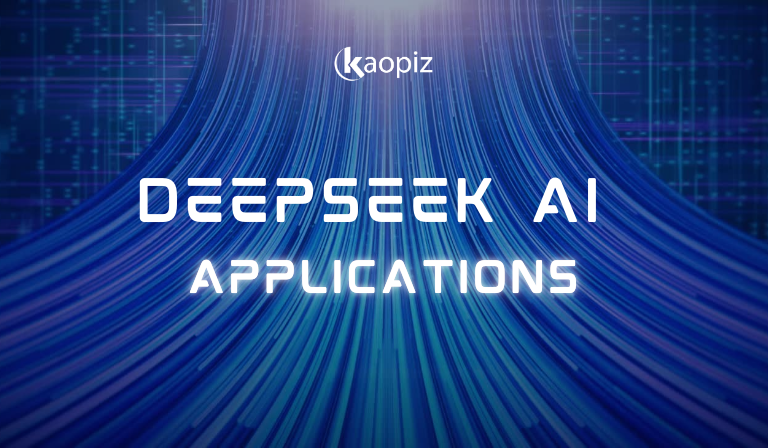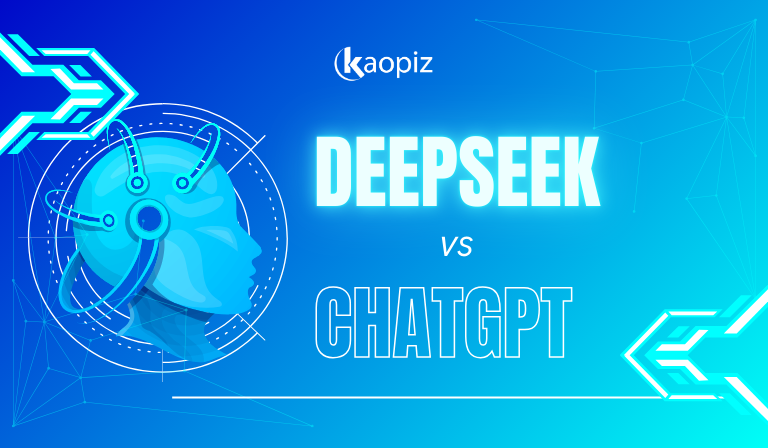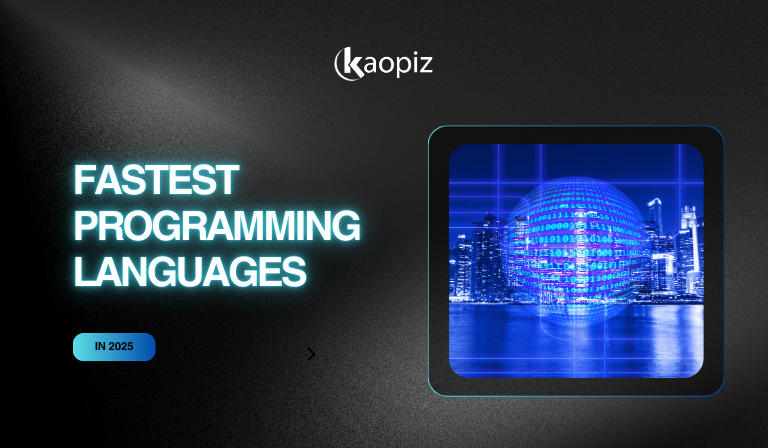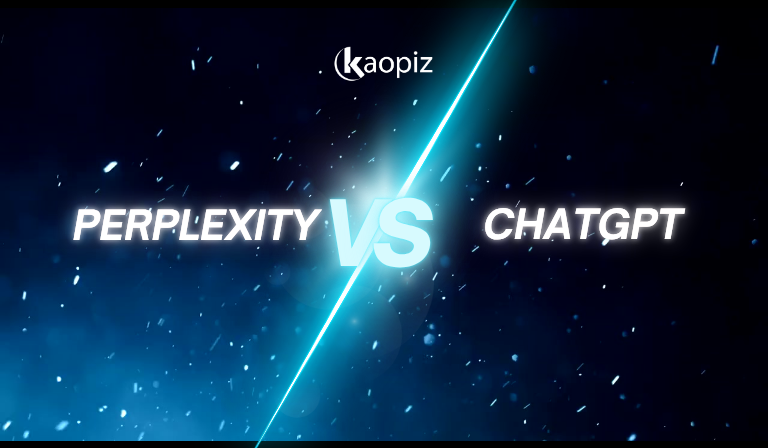What Are AI Chatbots? Benefits, Examples, and Best Use Cases
AI chatbots have rapidly evolved from simple scripted responders to intelligent, conversational tools that are transforming how businesses engage with customers. In 2025, they will become vital to digital strategies, handling everything from customer support and lead generation to shopping assistants and internal HR support.
Then what exactly are AI chatbots, how do they work, and why are so many companies – from startups to global enterprises – rushing to adopt them? In this blog, we’ll break down what AI chatbots are, explore their advantages and limitations, highlight real-world examples, and show you how to choose the right use case for your business. Let’s dive in!
Table of Contents
- What Are AI Chatbots?
- How Do AI Chatbots Work?
- What Are the Advantages and Disadvantages of AI Chatbots?
- Real-World Examples of AI Chatbots
- How Kaopiz Can Help You Build Smart AI Chatbots
- Conclusion
- FAQs
What Are AI Chatbots?
AI chatbots are software applications powered by artificial intelligence, designed to simulate human-like conversations with users through text or voice. Unlike traditional rule-based bots that follow fixed scripts, AI chatbots use natural language processing (NLP), machine learning (ML), and contextual understanding to interpret user input, learn from interactions, and respond in more dynamic, human-like ways.
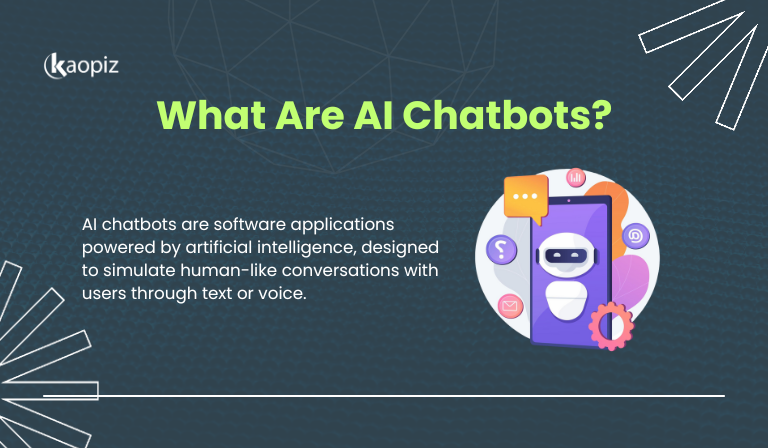
Modern chatbots can understand user input – even when it’s unstructured or grammatically incorrect – by analyzing context, intent, and previous interactions. Some bots offer basic Q&A functionality, while others are more advanced, learning from each conversation and personalizing responses over time.
You might interact with a chatbot that prompts you to describe your problem, then clarifies your input or suggests a solution, much like a live support agent would.
How Do AI Chatbots Work?
AI chatbots for business combine AI, ML, and NLP to simulate human-like conversations. These technologies allow the chatbot to understand user intent, analyze context, and generate appropriate responses—even when input is unclear or conversational. The more the chatbot interacts with users, the more it learns and improves over time.
At the core, they process data collected from user interactions and are trained on this data using algorithms and defined rules. This allows them to deliver faster, more accurate, and more personalized responses. They can be integrated into websites, messaging apps, mobile apps, and even voice assistants, offering real-time engagement across platforms.
There are two main types of chatbots (Declarative and Predictive Chatbots), categorized by their level of intelligence and functionality:
- Declarative Chatbots: Task-oriented bots that handle specific queries using predefined rules, NLP, and basic machine learning.
- Predictive Chatbots: More advanced conversational bots (also called virtual agents) that use NLU and predictive analytics to manage complex, personalized interactions and learn over time.
What Are the Advantages and Disadvantages of AI Chatbots?
While these chatbots offer powerful capabilities that can transform customer engagement and streamline operations, they also come with certain limitations. Understanding both the advantages and disadvantages is key to deciding how – and where – to implement them effectively in your business.
Advantages
Then what are the benefits of using AI chatbots? AI chatbots offer a wide range of benefits, from enhancing customer service to boosting operational efficiency, which makes them an essential tool for modern businesses.
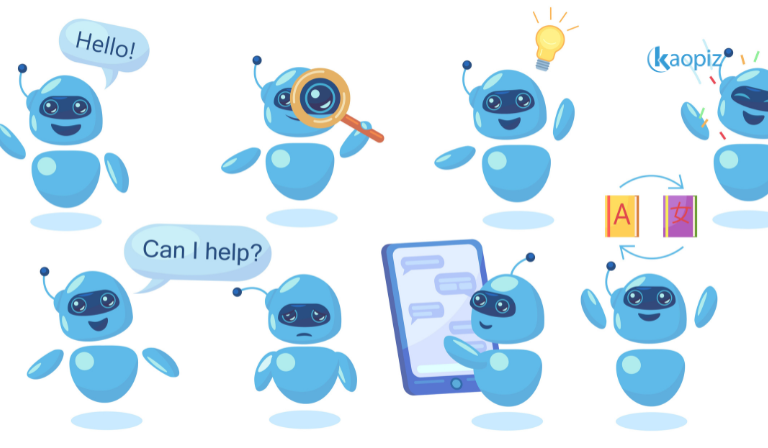
Here are some of the key AI chatbot benefits you should know:
- 24/7 customer support: Unlike human agents, AI chatbots provide 24/7 customer support, ensuring that users get immediate responses – whether it’s day or night, weekday or weekend. This improves customer satisfaction and reduces wait times across industries.
- Cost savings and scalability: By automating repetitive inquiries and tasks, chatbots significantly reduce the need for large support teams. Businesses can scale support and sales operations quickly without a proportional increase in costs.
- Personalized user experiences: AI chatbots can remember past interactions, learn from behavior, and use that data to deliver personalized responses. Whether recommending a product, answering a follow-up question, or tailoring content, this personalization improves user engagement and builds stronger relationships.
- Data collection and analytics: AI chatbots collect user input, behavior patterns, and feedback, allowing businesses to analyze customer preferences, pain points, and trends. These insights help improve services, optimize marketing strategies, and guide product development.
The advantages of AI chatbots go beyond convenience – they provide strategic value that supports long-term business growth.
Disadvantages
While the benefits of AI chatbots are compelling, they’re not without limitations.
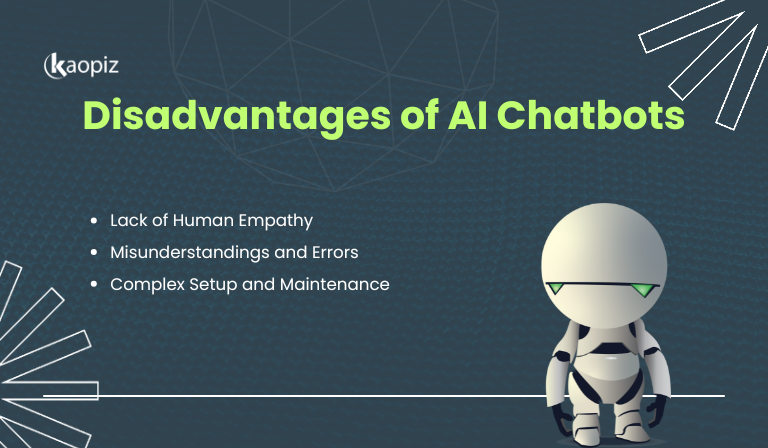
Here are some drawbacks:
- Lack of Human Empathy: AI chatbots, no matter how advanced, still lack genuine emotional intelligence. They can simulate understanding but may struggle to respond appropriately in sensitive or nuanced situations, making them less ideal for handling emotionally charged customer interactions.
- Misunderstandings and Errors: Despite improvements in NLP, chatbots can sometimes misinterpret user intent, especially if the input is vague, overly complex, or outside their training data. This can lead to frustrating loops or incorrect responses, ultimately hurting the user experience.
- Complex Setup and Maintenance: Building a smart, reliable chatbot requires time, clean data, and technical expertise. Businesses must continuously train and update their chatbot models to keep responses accurate and relevant, especially in dynamic industries where user needs evolve quickly.
Like any technology, chatbots have limitations, but with proper planning, the right AI use case, and a trusted development partner, many of these challenges can be mitigated.
Real-World Examples of AI Chatbots
AI chatbots are already making a measurable impact across industries, from customer support to healthcare. Let’s look at a list of AI chatbot examples to explore how leading businesses are leveraging them to solve real problems, enhance user experiences, and streamline operations.
Customer Service
Customer service is one of the most common and impactful applications of AI chatbots. These bots handle a high volume of routine inquiries, like password resets, order tracking, or return policies, freeing up human agents to focus on more complex issues. With 24/7 availability, they reduce response times, improve customer satisfaction, and significantly lower support costs.
- Example: Zendesk AI
Zendesk’s chatbot is one of the examples of AI chatbots providing automated responses and intelligent ticket routing, enabling companies to resolve simple issues instantly and assign more complex ones to the right support agents, improving both speed and accuracy.
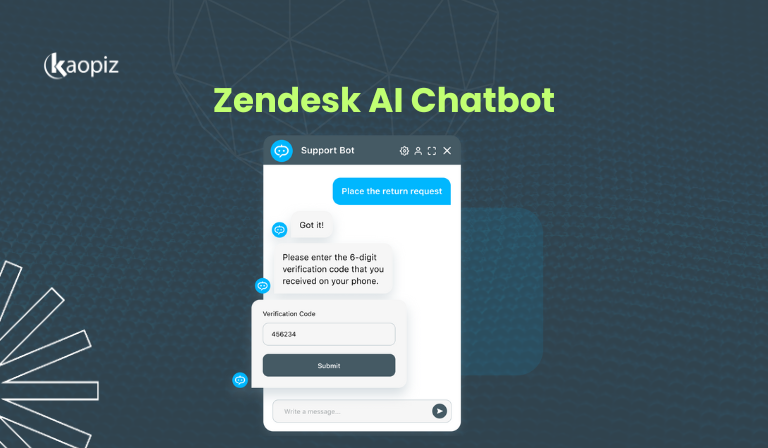
Bank of America’s AI-powered chatbot Erica helps customers manage finances, track spending, and get quick answers, handling over 2 billion client interactions, helping 42 million clients.
ECommerce
AI chatbots play a key role in enhancing the online shopping experience. They help customers discover products, answer pre-purchase questions, assist with order tracking, and even guide users through the checkout process. By delivering personalized recommendations and real-time support, chatbots increase conversion rates and reduce cart abandonment.
- Example: H&M’s Shopping Assistant
H&M uses an AI-powered chatbot to help customers find clothing items based on style preferences, size, and availability. The bot not only answers questions but also recommends products, creating a smooth, guided shopping experience.
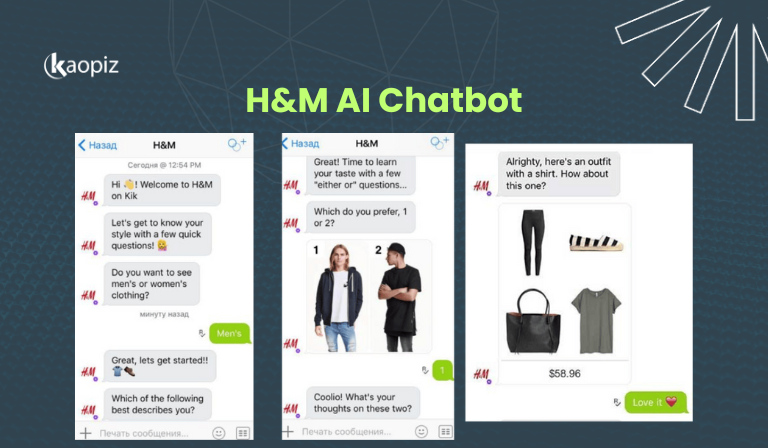
- Example: Amazon Q
Amazon launched Q, an advanced AI chatbot assistant specifically for AWS customers. It analyzes customer behavior to recommend products, monitors inventory levels to prevent stockouts, and automates order processing, handling tasks like confirmations, shipping updates, and return requests.
Healthcare
In the healthcare industry, AI chatbots are helping providers deliver faster, more accessible, and patient-friendly services. These bots can assist with symptom checking, appointment scheduling, medication reminders, and even post-care instructions. For patients, chatbots offer instant answers and guidance, often eliminating the need for long wait times or unnecessary visits.
- Example: Babylon Health
Babylon Health’s AI chatbot allows users to input symptoms and receive real-time triage advice, connecting them to the appropriate level of care. It uses advanced natural language understanding and medical databases to offer safe, accurate recommendations.
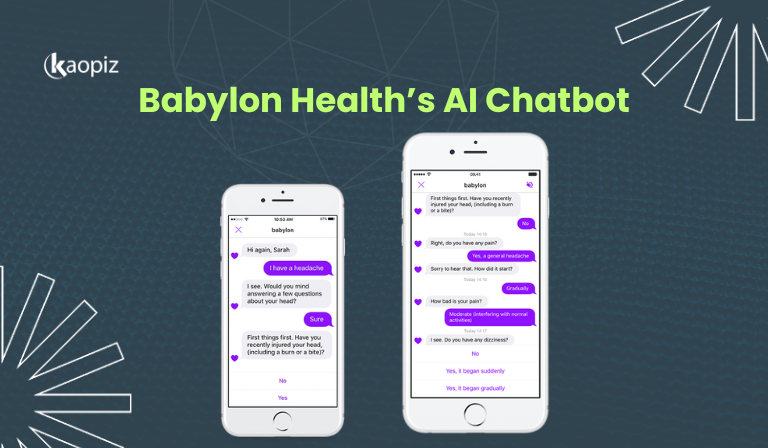
- Example: Ada Health
Ada is a conversational AI chatbot used by millions globally to assess health concerns. It asks users targeted questions to provide personalized health insights and directs them to suitable care options.
Education
AI chatbots are playing a growing role in education, offering personalized support to students, teachers, and administrators. These intelligent assistants can answer questions about coursework or school policies while also providing real-time feedback, tutoring, or content recommendations based on individual learning progress. Instructors can also use chatbots to automate administrative tasks like attendance tracking or grading FAQs.
- Example: Socratic by Google AI
Socratic is an AI educational chatbot developed by Google. It uses natural NLP to understand student queries, then taps into Google’s AI and search tools to deliver step-by-step explanations, YouTube videos, and study resources – making it an interactive and comprehensive learning assistant.
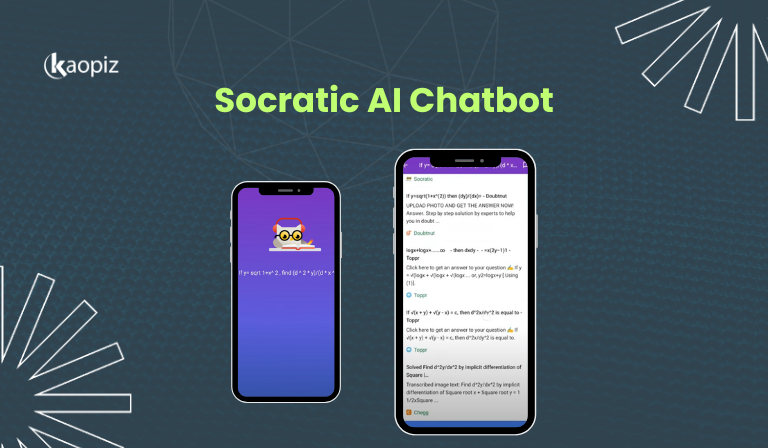
- Example: Duolingo’s AI Tutor
Duolingo integrates AI-powered chatbots to simulate conversations in different languages, allowing learners to practice in a low-pressure environment. The bot adapts to the user’s learning level, helping reinforce vocabulary and grammar in real time.
HR
In human resources, chatbots help organizations streamline communication, automate repetitive tasks, and improve the employee experience. These bots can answer FAQs about company policies, assist with onboarding, schedule interviews, and even collect employee feedback, saving HR teams valuable time and ensuring consistent support across the organization.
- Example: MeBeBot
MeBeBot is an AI HR assistant that answers employee questions about benefits, IT support, payroll, and company policies. It integrates collaboration tools like Slack and Microsoft Teams, helping HR departments reduce repetitive inquiries by up to 75%.
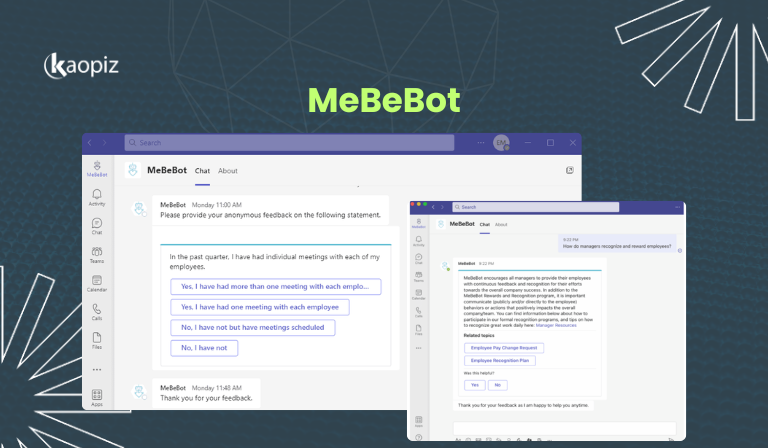
- Example: Paradox’s Olivia
Olivia is an AI recruiting assistant that helps companies automate the hiring process. It screens candidates, schedules interviews, and communicates updates – all through natural, human-like conversations – allowing recruiters to focus on higher-level tasks.
How Kaopiz Can Help You Build Smart AI Chatbots
At Kaopiz, we help businesses turn ideas into intelligent, real-world chatbot solutions that deliver measurable results. Whether you’re looking to automate customer service, improve internal operations, or create a personalized user experience, our AI chatbot development services are designed to meet your unique business needs.
We specialize in building both task-oriented and conversational AI chatbots – leveraging technologies like NLP, ML, and generative AI. From multilingual customer support bots to sales assistants and internal HR helpdesks, our solutions are scalable, secure, and fully customizable.

What We Offer:
- Custom AI chatbot development for web, mobile, or messaging platforms.
- Integration with platforms like ChatGPT, Bard, and more.
- Generative AI capabilities for dynamic conversations and content generation.
- Multilingual support and training on industry-specific datasets.
- End-to-end delivery: from ideation and prototyping to deployment and ongoing optimization.
With over a decade of experience and a team of 300+ tech experts, Kaopiz empowers you to deploy the best chatbots that not only respond but truly engage.
Conclusion
AI chatbots are proven solutions for businesses looking to scale support, improve customer engagement, and boost operational efficiency. From answering FAQs and offering product recommendations to supporting internal HR and education systems, chatbots are reshaping the way organizations communicate and operate.
Whether you’re exploring use cases, weighing the AI chatbot pros and cons, or ready to build your intelligent assistant, now is the time to act. At Kaopiz, we combine deep AI expertise with real-world development experience to deliver custom chatbot solutions tailored to your goals.
Ready to build a smarter chatbot? Let Kaopiz help you bring your vision to life.
FAQs
What’s the Difference Between AI Chatbots and Virtual Assistants?
AI chatbots are typically designed for specific tasks, like answering FAQs, booking appointments, or providing product recommendations, within a defined context. Virtual assistants, on the other hand, are more advanced and capable of handling multi-step, personalized conversations. They often integrate with multiple systems and offer broader functionality, like voice interaction and proactive notifications.
Will AI Chatbots Be the Next Gen Chatbot?
Yes – AI-powered chatbots, especially those enhanced with generative AI and machine learning, represent the next generation of chatbot technology. They are more conversational, context-aware, and capable of learning over time, making them vastly more effective than traditional rule-based bots.
How Do I Implement AI Chatbots?
To implement AI chatbots, start by identifying the right use case, such as customer service or lead qualification. Next, choose the right technology (e.g., NLP engine, generative AI model), prepare clean data for training, and work with an experienced development partner like Kaopiz to build, integrate, and optimize your chatbot solution for your business goals.
Trending Post
